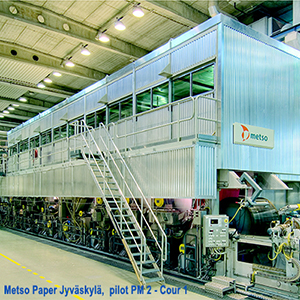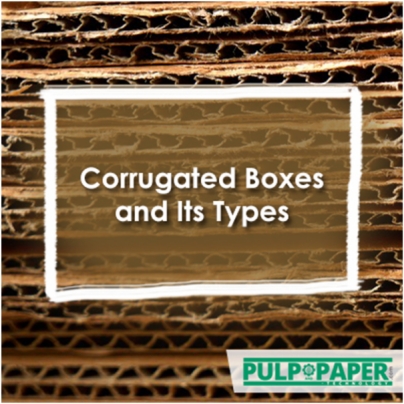Smart Sensors and Predictive Maintenance: Enhancing Reliability in Paper Manufacturing Machinery

In the ever-evolving realm of paper manufacturing, the incorporation of smart sensors and predictive maintenance techniques stands out as a pivotal transformation. This piece delves into the revolutionary influence of these technologies on paper manufacturing machinery, underscoring the significant advantages they bring to B2B clients by mitigating downtime and lowering maintenance expenses.
I. The Rise of Smart Sensors:
Smart sensors represent a transformative leap in paper manufacturing, where their deployment is redefining the industry's approach to equipment monitoring and maintenance. These sensors, equipped with advanced technologies, serve as intelligent observers within the manufacturing environment. Vibration sensors, temperature sensors, and pressure sensors are key players in this sensor ecosystem. Vibration sensors detect irregularities in the machinery's motion, indicating potential faults or wear. Temperature sensors provide crucial insights into the thermal conditions of equipment, identifying overheating or cooling inefficiencies. Pressure sensors gauge the internal pressures within machinery, offering early warnings of issues that could lead to breakdowns.
What sets smart sensors apart is their seamless ability to collect real-time data. They consistently gather and transmit information from diverse points on the machinery, forming a comprehensive snapshot of its performance. This continuous flow of real-time data facilitates ongoing monitoring, enabling the early detection of anomalies and potential failures. This perpetual vigilance empowers paper manufacturers to deploy proactive maintenance strategies, averting downtime and optimizing the overall reliability of their equipment.
II. Predictive Maintenance in Paper Manufacturing:
Predictive maintenance stands as a pivotal strategy in the contemporary landscape of paper manufacturing, offering a paradigm shift from traditional reactive and preventive maintenance approaches. Unlike reactive maintenance, which addresses issues after they occur, and preventive maintenance, which follows a predetermined schedule, predictive maintenance relies on data-driven insights to anticipate equipment failures before they manifest. This proactive approach is particularly significant in the paper industry, where downtime can have substantial financial implications.
By leveraging advanced data analytics and machine learning algorithms, predictive maintenance analyzes patterns and trends in the operational data collected by smart sensors. This analysis enables the identification of subtle indicators of potential failures, allowing for timely intervention. The significance lies in the ability to address issues precisely when they begin to emerge, maximizing the lifespan of equipment, minimizing unplanned downtime, and ultimately optimizing operational efficiency in the paper manufacturing process. The integration of predictive maintenance in paper manufacturing reflects a strategic commitment to efficiency, cost-effectiveness, and the preservation of valuable production time.
III. Benefits for B2B Clients:
The integration of smart sensors and predictive maintenance in paper manufacturing unfolds a spectrum of tangible benefits for B2B clients. One of the most significant advantages is the substantial reduction in downtime. Through real-time monitoring facilitated by smart sensors, potential issues are detected early on, enabling proactive maintenance driven by predictive analytics.
Case studies abound with instances where this approach has not only minimized but entirely circumvented downtime, underscoring the invaluable advantage of anticipating and addressing problems before they escalate. Beyond mere operational continuity, predictive maintenance contributes to noteworthy cost savings. The analysis of how it reduces overall maintenance costs reveals a strategic allocation of resources, preventing catastrophic failures and the associated hefty repair expenses.
B2B clients stand to gain long-term financial benefits by embracing this proactive maintenance paradigm. Furthermore, the improved reliability of equipment is a cornerstone benefit. Targeted maintenance interventions, guided by the insights provided by smart sensors, result in an enhanced lifespan of machinery and its components. This reliability is echoed in the testimonials of B2B clients, who attest to the tangible improvements in equipment performance and the consequential positive impact on their operational efficiency and bottom line.
IV. Implementation Challenges and Solutions:
The integration of smart sensors and predictive maintenance, while promising substantial benefits, is not without its challenges in the realm of paper manufacturing. Common obstacles include the initial costs of acquiring and installing the necessary sensor infrastructure, data integration complexities, and the potential disruption to existing workflows. Overcoming resistance to adopting these new technologies is crucial, and strategies involve thorough education and communication about the long-term advantages, showcasing successful case studies, and providing hands-on training to personnel.
Furthermore, a seamless integration into existing processes demands careful planning. Compatibility issues, retrofitting challenges, and ensuring minimal disruption during the implementation phase are critical considerations.
Collaborative partnerships with technology providers, comprehensive training programs for staff, and phased implementation approaches are effective strategies to address these challenges. As the industry moves towards Industry 4.0, navigating and mitigating these implementation challenges is essential to realizing the full potential of smart sensors and predictive maintenance in the paper manufacturing landscape.
V. Future Trends:
As paper manufacturing continues its evolution, the future holds exciting prospects in the realm of smart sensors and predictive maintenance. Emerging trends indicate a shift towards even more sophisticated sensor technologies, including the integration of artificial intelligence and machine learning algorithms for more precise predictive analytics. Miniaturization and increased sensor efficiency are expected, allowing for the monitoring of smaller components and a broader range of operational parameters.
The potential for advancements also lies in the integration of Internet of Things (IoT) connectivity, enabling a networked ecosystem of smart sensors that communicate seamlessly and contribute to a holistic understanding of machinery health. B2B clients looking to stay ahead of the curve can capitalize on these trends by fostering a culture of innovation, staying informed about technological advancements, and actively collaborating with industry leaders and technology providers.
Investing in workforce training to harness the full potential of evolving technologies and cultivating a proactive approach to equipment maintenance will position B2B clients at the forefront of the transformative wave shaping the future of smart sensors and predictive maintenance in paper manufacturing.
Conclusion:
Smart sensors and predictive maintenance are pivotal in revolutionizing the reliability of paper manufacturing machinery. As B2B clients seek ways to enhance efficiency and reduce costs, the adoption of these technologies presents a strategic advantage. By embracing the power of data-driven insights, the paper industry can ensure smoother operations, increased longevity of equipment, and ultimately, a more sustainable and profitable future.









